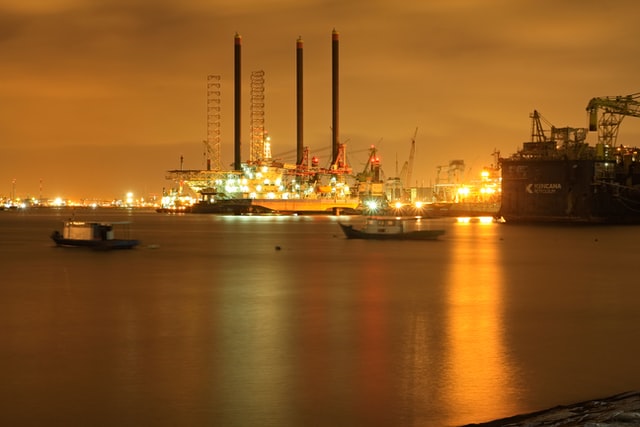The Energy Report: Climatic Chaos

Photo by Timothy Newman on Unsplash
Oil prices have gone on quite a ride as the winter storm reduced production from the shale fields by 4000,000 to 500,000 barrels a day sending oil higher yesterday. Prices then seemed to pull back when it was announced that other related refining issues could keep refiners shut in longer than anticipated.
Reuters reported that Pemex’s Deer Park refinery and Motiva Enterprises’ Port Arthur, the biggest refinery in the United States, could see their restart stretched out to the first or second week of January, That report caused a surge in diesel prices and a corresponding break, making a huge move up in the diesel and gasoline cracks. At the peak, Reuters reported that about 3.58 million barrels of oil per day, delivering about 20% of U.S. motor fuels were shut in.
Globally there is a lot of focus on China’s reopening. China said it will stop requiring inbound travelers to go into quarantine starting Jan. 8, a major step towards relaxing stringent curbs on its borders. The good news is that China is reopening, the bad news is that China is reopening. Obviously, with China’s reopening oil demand and expectations will rise. This should increase the demand for commodities and put further upward pressure on inflation. When China was shut down, they did accumulate a lot of oil from places like Russia and had a lot of supply. So the real impact on oil prices might be delayed a few months. Yet when China gets going global, oil spare production capacity will be essentially gone.
At the same time, the rising cases of covid could cause travel restrictions into and out of China. Writers are reporting that the United States is thinking about joining Japan by putting restrictions on travelers coming in from China because of the raging cases of covid. Bloomberg reported that the US is considering taking new coronavirus precautions for people traveling from China saying US officials said the government is concerned about the surge of cases in China and has raised questions about the transparency of data the country is reporting about the spread of the virus. The officials requested anonymity to discuss internal thinking. Japan is now requiring a negative covid-19 test upon arrival for travelers from China, while Malaysia has imposed new tracking and surveillance measures. The US is weighing similar steps, the officials said, as a way to prevent further spread.
The market also must prepare for oil inventories which we’ll see from a delayed report from the American Petroleum Institute at 3:30p central time today. My expectations are that we could see a pretty good crude oil draw even with the report that the US SPR crude inventories fell by 3.5mb week over week to 375.1 million barrels (mb) last week. While the Biden administration could still authorize more barrels of oil to be released, the truth is that the amount of withdrawal is coming to an end and that should provide more support for oil prices going forward.
Then there is price cap bingo. The European price cap on Russian crude oil is going to go into effect in February yet it is way above the current price of Russian oil. Russian Urals oil traded above $56 per barrel on Tuesday, below the price cap level. In the much-anticipated response to the price cap, Vladimir Putin published the decree on the kremlin’s website saying that he was prepared to respond to “actions that are unfriendly and contradictory to international law by the United States and foreign states and international organizations joining them. “Deliveries of Russian oil and oil products to foreign entities and individuals are banned on the condition that in the contracts for these supplies, the use of a maximum price fixing mechanism is directly or indirectly envisaged,” the decree stated referring specifically to the United States and other foreign states that have imposed the price cap. Russia says that they will ban the supply of crude oil and oil products from Feb. 1 for five months to nations that abide by the cap. EU countries have separately implemented an embargo that prohibits them from purchasing seaborne Russian oil.
Of course, at this point, this is just a lot of debate over a hypothetical until the crude oil goes above the price cap level. All these threats made by Russia and the EU may not come to fruition but I believe at some point next year we are going to have a showdown between Russia and the EU. The question is whether Europe or Russia will blink first. In the meantime, Russian good sales are going quite well. Bloomberg reports Japan is set to import its first crude oil shipment from Russia in more than half a year, as the government pushes energy importers to stockpile fuel in a bid to avoid future shortages.
Natural gas prices, which were surging during the cold weather, are now reversing on what one of my clients says could be a heat wave. Well maybe a heat wave is a little much but now there are weather forecasts for most of the country showing that we should be well above average in temperatures when we get into January and February. On top of that, globally, because of warmer temperatures in Europe, the natural gas prices in that part of the world are falling as well.
The fundamentals for oil and products are still very bullish. We expect that in the new year we’re going to see demand outstrip supply. That is even taking into account the potential demand loss from rising interest rates in a slowing global economy. China’s reopening obviously is going to keep the market very tight and we could face a slowing economy with rising prices as we head into the new year.
More By This Author:
The Energy Report: ChillingThe Energy Report: Locked Down But Loaded
The Energy Report: Cracking Up



